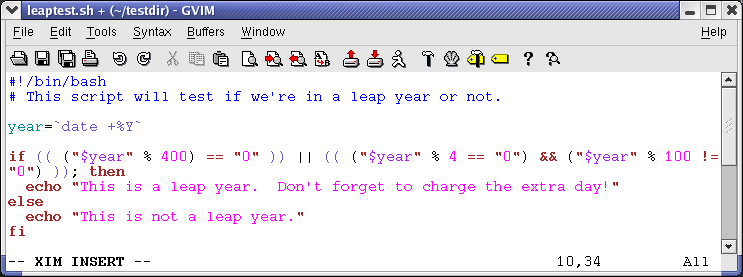

- #Linux batch script example how to
- #Linux batch script example pdf
- #Linux batch script example archive
When you execute above function it will generate following output: # OS information #

We can use below syntax to define function: function function_name '` It includes the solution as well.If any function accepts arguments then those can be provided from command line as follows: $ my_func arg1 arg2 arg3 Defining function
#Linux batch script example pdf
You can test your newly learned knowledge by practicing some simple bash exercises in the PDF below. I hope you have enjoyed making your bash scripts smarter!

You can copy and paste the above in terminal and see the result for yourself.īasically, you just add semicolons after the commands and then add the next if-else statement.Īwesome! This should give you a good understanding of conditional statements in Bash. You can use all the if else statements in a single line like this: if then echo "root" else echo "not root" fi When you just want to see the result in the shell itself, you may use the if else statements in a single line in bash. A shell script is a file that comprises ASCII text. In this tutorial, we highlight some of the basic shell scripting operations that every Linux user should have. That's the decent way of doing it but you are not obliged to it. Shell scripts play an enormous role in automating repetitive tasks which otherwise would be tedious executing line by line. So far all the if else statement you saw were used in a proper bash script. filetype.sh weather.shĮrror: Invalid number of arguments Bonus: Bash if else statement in one line Let’s do a few runs of the script to test it with various types of files: :~$. If there are no arguments or more than one argument, the script will output a message and exit without running rest of the statements in the script. I improved the script a little by adding a check on number of arguments. Let’s create one final script named filetype.sh that detects whether a file is a regular file, directory or a soft link: #!/bin/bashĮcho "Error: Invalid number of arguments" Luckily, you don’t need to memorize any of the test conditions because you can look them up in the test man page: :~$ man test
Please see our website here for partition information. There must be a space between the opening and closing brackets and the condition you write. We have listed a few sample SBATCH scripts to assist users in building their own scripts to submit jobs.
#Linux batch script example archive
The archive file can then be moved or copied to another location. For example, a script can be used to configure which directories to backup, and pass those directories as arguments to the tar utility, which creates an archive file.

The if statement is closed with a fi (reverse of if). One of the simplest ways to backup a system is using a shell script. The general syntax of a basic if statement is as follows: if then Consider that as a Linux machine boots up, it executes the shell scripts in /etc/rc.d to restore the system configuration and set up services. The most fundamental construct in any decision-making structure is an if condition. A working knowledge of shell scripting is essential to anyone wishing to become reasonably proficient at system administration, even if they do not anticipate ever having to actually write a script. This way you can build much more efficient bash scripts and you can also implement error checking in your scripts.
#Linux batch script example how to
In this part of the bash beginner series, you will learn how to use conditional statements in your bash scripts to make it behave differently in different scenarios and cases.


 0 kommentar(er)
0 kommentar(er)
